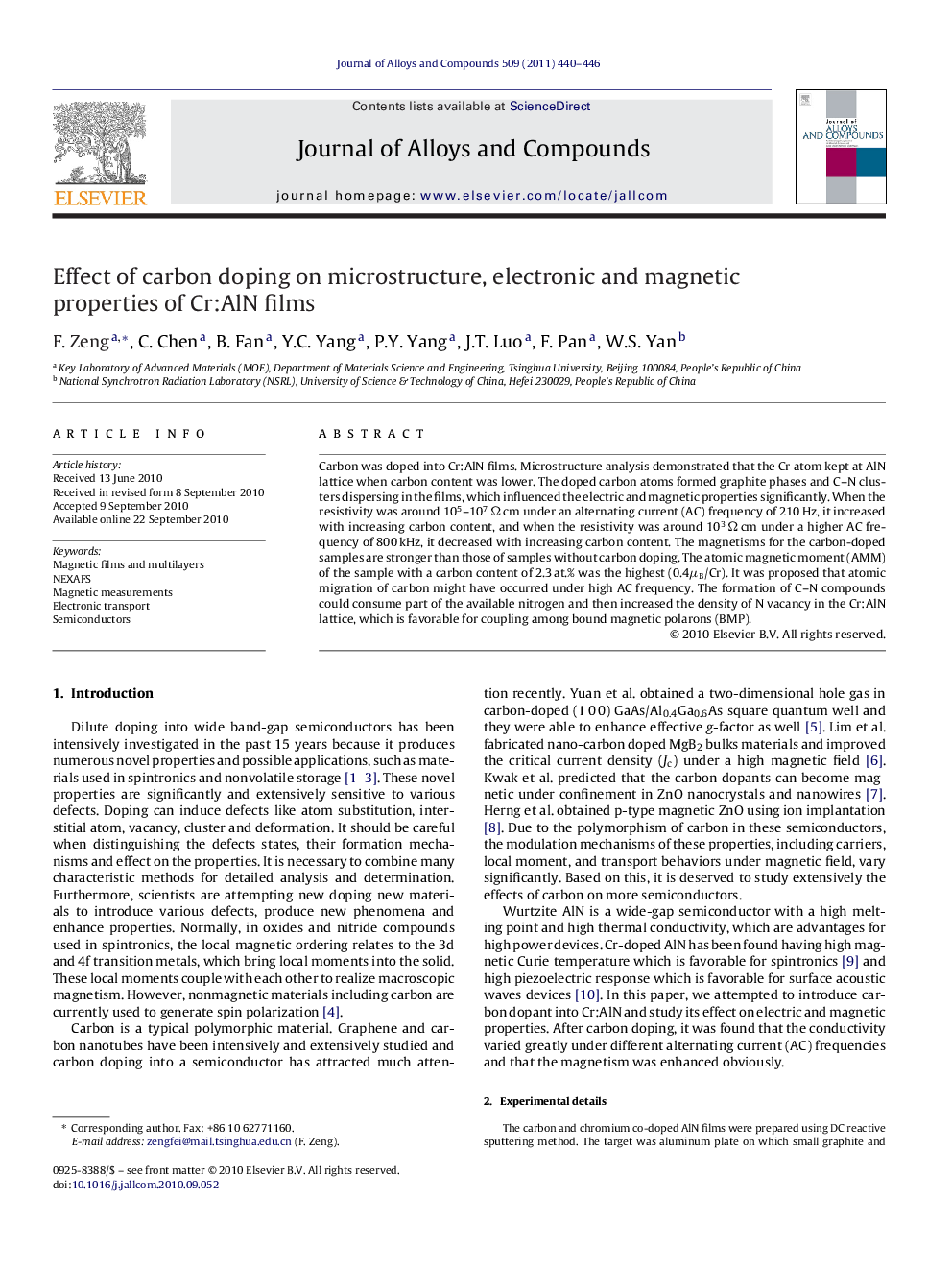| Article ID | Journal | Published Year | Pages | File Type |
|---|---|---|---|---|
| 1619189 | Journal of Alloys and Compounds | 2011 | 7 Pages |
Carbon was doped into Cr:AlN films. Microstructure analysis demonstrated that the Cr atom kept at AlN lattice when carbon content was lower. The doped carbon atoms formed graphite phases and C–N clusters dispersing in the films, which influenced the electric and magnetic properties significantly. When the resistivity was around 105–107 Ω cm under an alternating current (AC) frequency of 210 Hz, it increased with increasing carbon content, and when the resistivity was around 103 Ω cm under a higher AC frequency of 800 kHz, it decreased with increasing carbon content. The magnetisms for the carbon-doped samples are stronger than those of samples without carbon doping. The atomic magnetic moment (AMM) of the sample with a carbon content of 2.3 at.% was the highest (0.4μB/Cr). It was proposed that atomic migration of carbon might have occurred under high AC frequency. The formation of C–N compounds could consume part of the available nitrogen and then increased the density of N vacancy in the Cr:AlN lattice, which is favorable for coupling among bound magnetic polarons (BMP).
Research highlightsIn this work, we have doped carbon into Cr:AlN and got two main results. First, we have found that doping small fraction of carbon will enhance magnetism significantly. This may be useful for designing new diluted magnetic semiconductors (DMS) materials and devices. Second, carbon doping modulated electric resistivity significantly. This attracts our further interest in the recent background of resistive memory device.
